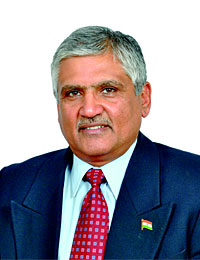Publisher’s Note
 Changing the oil can be very expensive, sometimes exceeding 40 times the cost of the oil. Therefore, lubricants must be considered as an asset rather than a consumable.
Changing the oil can be very expensive, sometimes exceeding 40 times the cost of the oil. Therefore, lubricants must be considered as an asset rather than a consumable.
There could also be problems like using contaminated or incompatible oil. The aging process for oil is very similar to that of the human body. Thus, when you expose a lubricant to elements within the machine, such as heat, water, air or other contaminants, irreversible damage can occur. While base oil doesn’t wear out, the longer it runs in your machinery, the less effective the additive packages will be. This results in viscosity increase, sludge and corrosive acids attacking metal surfaces and bearings. Using lower quality lubricants can cause these problems to follow much faster.
Although retrofit additives may extend the life of a lubricant, they can’t prevent aging and degradation. Adding retrofit additives can also upset the lubricant’s formulation balance.
There are ways to restore depleted additives in order to extend oil change intervals. One way is by additive reconstruction, which involves introducing an additive concentrate to in-service oil. This is usually applied to machines with large oil volumes such as compressors or turbine oils. However, additive reconstruction should only be done after lab testing has confirmed that adding a supplement will not harm the performance of the lubricant’s other properties.
Another option is a bleed-and-feed partial oil change, which is used when changing the oil is risky or inconvenient. It involves draining a portion of the oil volume and then immediately introducing the new oil. Doing this can remove some of the contaminants and introduce fresh additives.
A baseline test should be performed on any new lubricants to provide a reference and to help determine the oil’s quality so that the problems can be detected before they become catastrophic. Used oil that has a higher base number than the fresh oil is indicative of detergent being added to the old lubricant. Higher viscosity at extended service intervals can mean the original viscosity index improvers in the lubricant may have sheared. An increase in iron reveals abnormally high wear, which can result in severe damage to any part of the machine that comes in contact with these objects.
We would like to thank our readers for the great response to our previous edition’s cover story – “Creating a Culture of Lubrication Excellence and Reliability-Centred Maintenance” so much that a few have requested us to guide them to compete for the John R. Battle Award for Lubrication Excellence instituted by Noria Corporation, USA.
Our current issue’s cover story is “Extending Oil Change Intervals: How to manage the unintended consequences” which will help our readers to know about the unintended consequences of going years without an oil change. You will find much more in this edition.
Happy Reading!!
We welcome your feedback & suggestions. Wishing you all “Happy and Prosperous New Year 2020”.
Warm regards,
Udey Dhir
